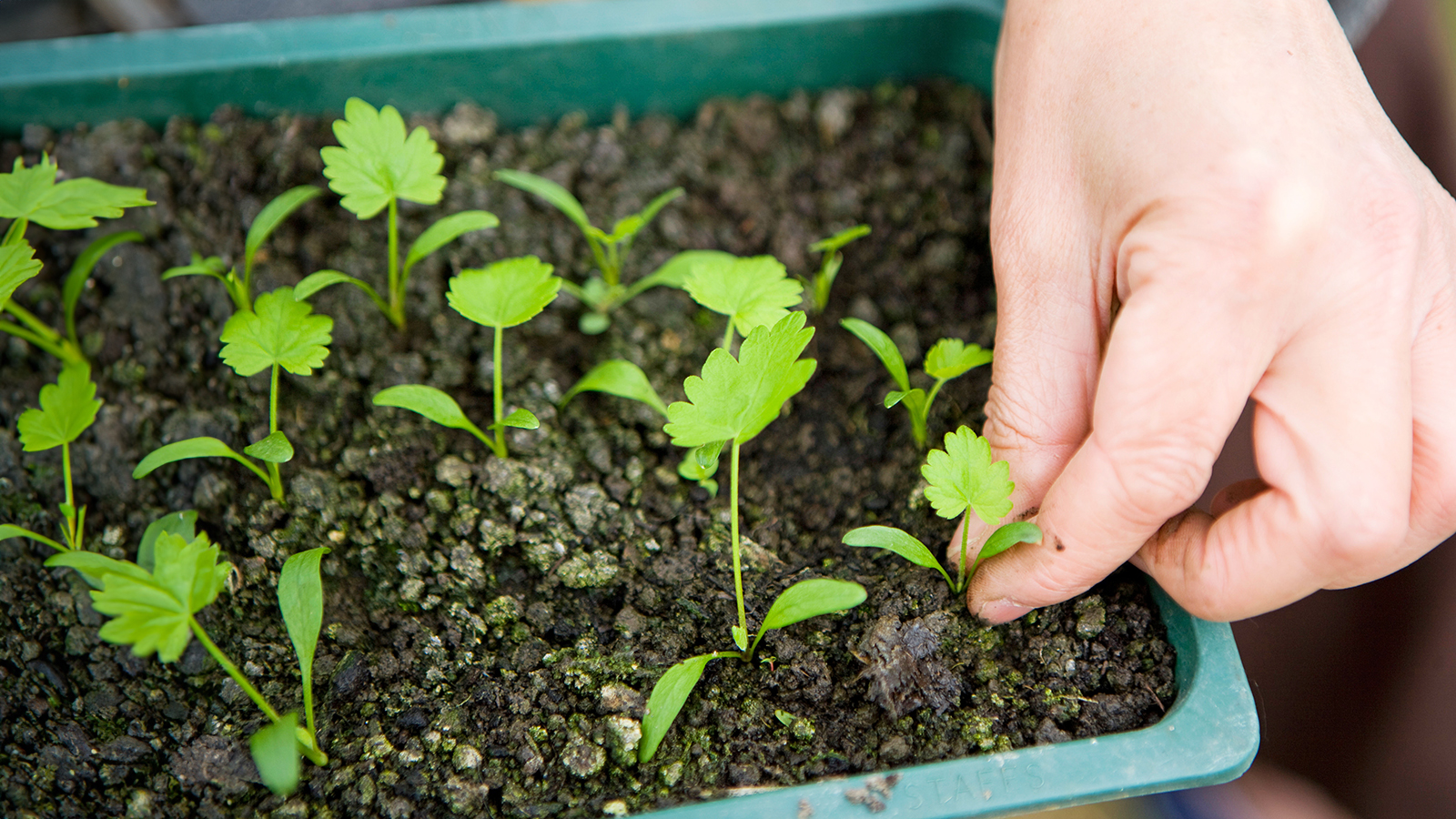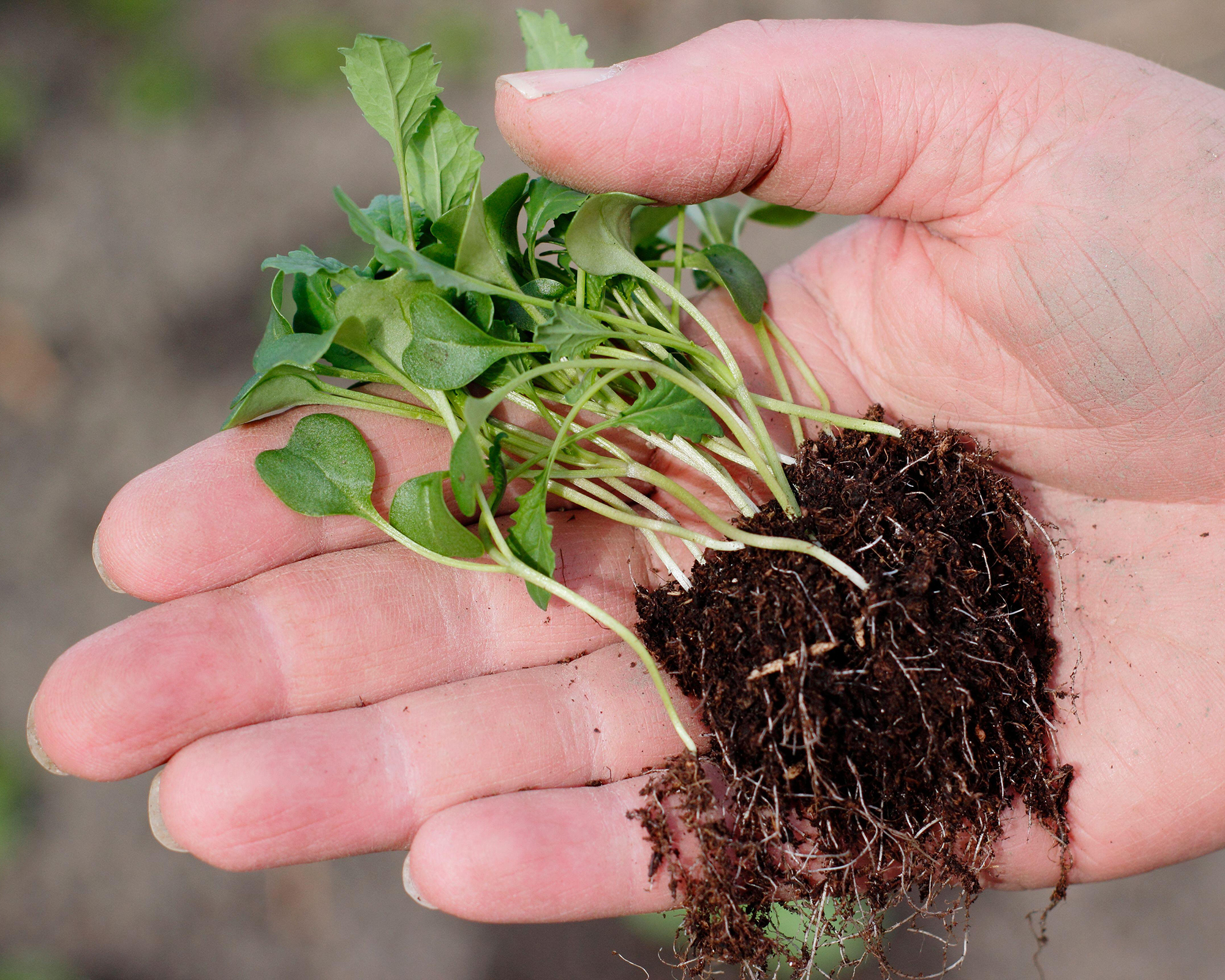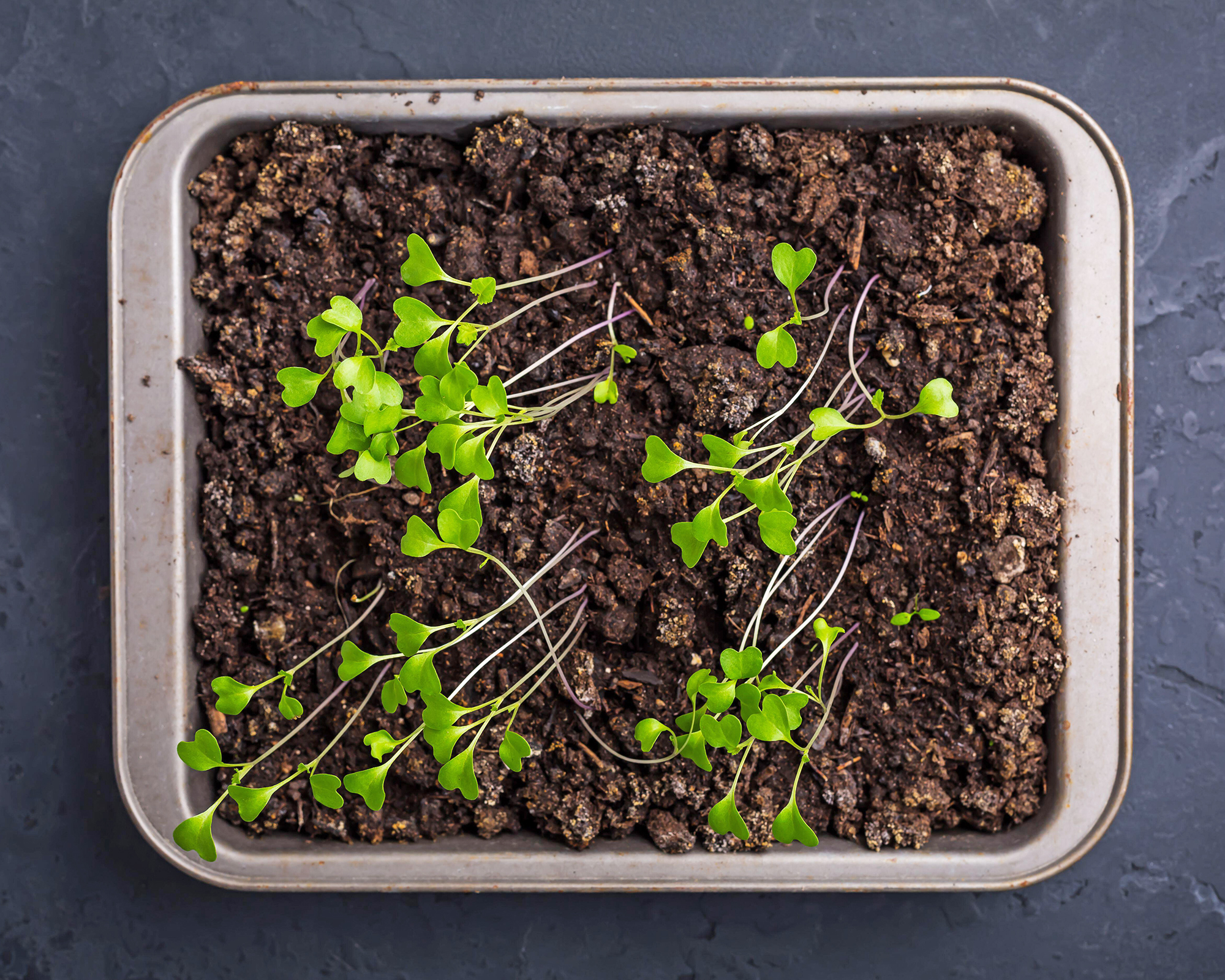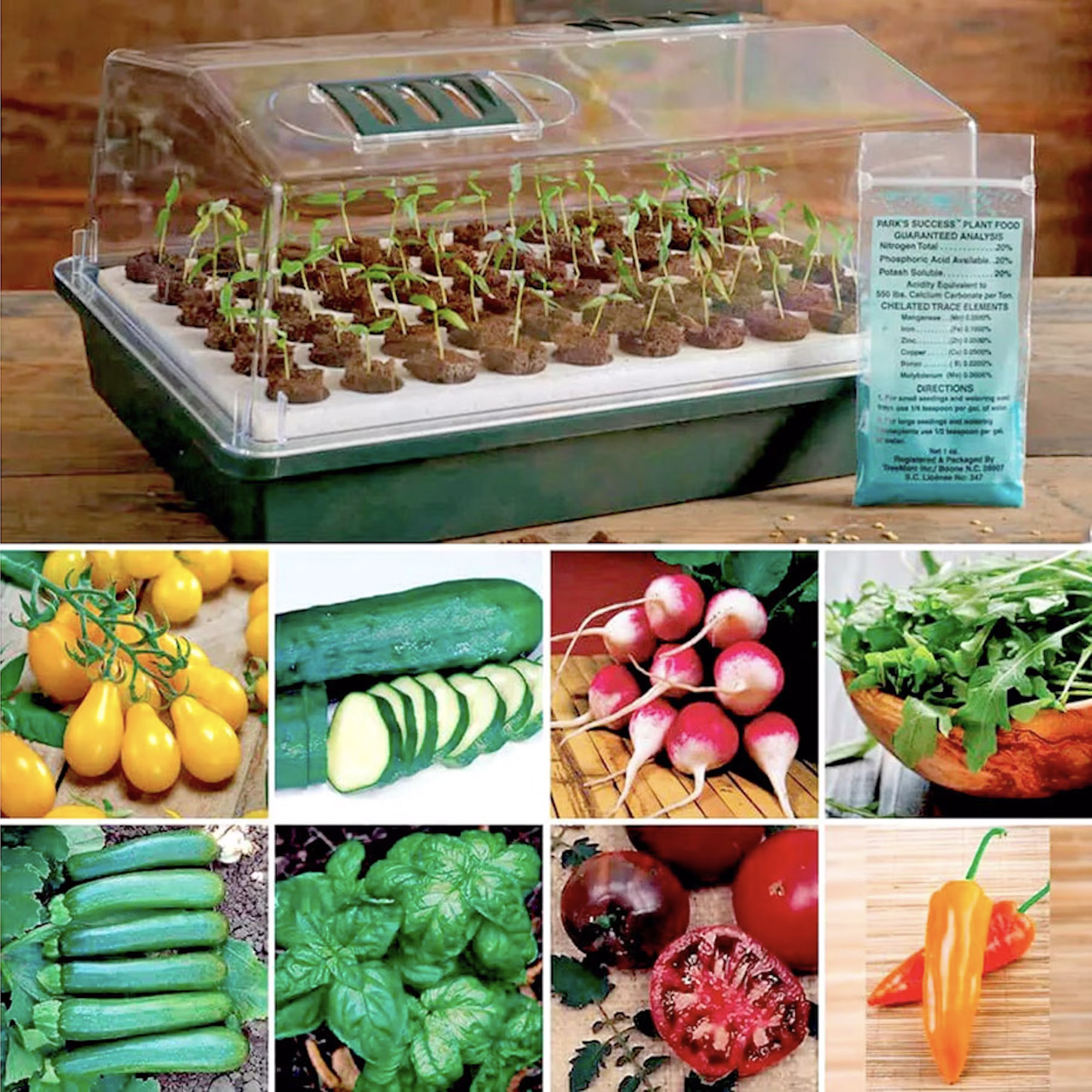How To Thin Seedlings The Right Way For Stronger, Healthier Plants
It may seem brutal, but thinning seedlings is essential for the health and production of flowers and vegetables. Learn how and when to do it with our guide.

Nikki Tilley

Everyone knows how uncomfortable it is to be on a crowded bus or elevator – it's definitely not a recipe for a happy time, and leaves you feeling desperate to stretch out. The same is true for seedlings: crowding is not conducive to optimal growth. Seedling congestion means less sunshine, root space, and soil nutrients for each plant. That’s why learning how to thin seedlings is an essential skill for all gardeners.
After creating new life by planting seeds, gardeners tend to feel quite attached to their seedlings. However, not all of them are destined to become fully grown plants and so pricking out weaker seedlings is a necessary evil we must all face in the gardening realm. Knowing when and how to thin plants is important for their overall health and success.
What Does it Mean to Thin Seedlings?
Some gardening terms are confusing and require lengthy explanations. But “thinning seedlings” is not one of them. When you thin seedlings, you take out some of the young plants in order to create more room for the remaining seedlings. After you thin your seedlings, you have fewer seedlings in the same space, reducing the crowding.
Every plant needs a certain amount of space in order to accommodate a root system and leaf growth. If you don’t thin out seedlings, each plant has less room, which limits the soil space for roots as well as the sunlight each will get on its foliage.
You might wonder if it wouldn’t be easier just to plant less seeds to start with. The simple answer is no. Seeds are not expensive and sowing generously allows for a better crop. Some seedlings will die out during the first week after sprouting. Then you can “weed out” the weaker seedlings or those damaged by insects over the next few weeks. That leaves you with a nice crop of healthy seedlings.

When to Thin Seedlings
Give the seedlings a little time before you think about thinning. Not every shoot is going to thrive, and some will die off naturally. Generally, you’ll want to start thinning when the plants are 3 to 4 inches (8 to 10cm) tall.
But keep your eye out for "true leaves" – those that resemble the leaves of the mature plant. These can be indicators too. When you see one set, you can start to thin seedlings to an inch or so apart. After a few weeks, you will be able to see which seedlings are strong and which are weak. When the seedlings grow three sets of true leaves, finish your thinning.
Sign up for the Gardening Know How newsletter today and receive a free copy of our e-book "How to Grow Delicious Tomatoes".
Plants with fragile roots, like beans and cucurbits (melons, squash, cucumbers), should be thinned as soon as possible, before their roots have a chance to become intertwined with one another.
Evening hours are a good time to thin seedlings as the cooler temperatures and darker conditions make it easier for the remaining seedlings to bounce back from any stress they may have received. Alternatively, cloudy days are just as good.
How to Thin Seedlings – Best Techniques
Before you start to thin seedlings, do some research. Find out the proper plant spacing for the species – often referenced on the seed packet information. The optimal spacing can vary quite a bit. For example, carrots only need to be 2 inches (5cm) apart, while artichoke plants should be 48 inches (120cm) apart. You’ll want to know this before thinning – and, in fact, before planting!
However, you won't want to reduce widely spaced plants that far initially, as some may die or get eaten by wildlife. In the earlier stages of thinning, leave two finger widths between seedlings, and continue to thin out weaker plants as they grow.
The best way to thin seedlings is to either cut or pull them out – either way can work. However, if you do not thin seedlings until they are well developed, you should cut them as pulling the roots may cause damage to the remaining seedlings.
If pulling seedlings, the soil needs to be damp. If it's dry, then water about an hour before thinning to make the process easier. Choose the seedlings you want to keep, then pull out the weaker seedlings by hand or cut them off at ground level with small scissors.

Which Seedlings to Thin
Thin out the seedlings that look weaker than the others. Be sure to remove seedlings attacked by insects or ravaged by diseases. Keep only the strongest, healthiest seedlings. And don’t worry if it looks like there is a lot of space between the remaining seedlings. Keep the optimal spacing in mind, but realize that your plants will grow quickly to use all available space.
Can You Thin Seedlings Without Killing Them?
We know that it isn’t easy – taking out new shoots from the soil. If it is really hard for you, you can use a spoon to remove the excess seedlings, then transplant them into other pots or beds.
If starting seeds indoors, it’s possible to pull out all the seedlings you like best and transplant them into individual pots or six-packs filled with potting soil. To accomplish this, you’ll need to proceed carefully. Hold a seedling by its leaves – never the stem! – and use a utensil or stick to loosen its roots from the soil. Transfer it into the waiting pot or six-pack. Water the new plant to settle the soil.
However, if you planted multiple seeds in each cell in a six-pack, don’t try to pull out the extras – you may damage the other seedlings' root systems. Instead, clip off the unwanted seedlings just at the soil line.
Do You Have to Thin Seedlings?
There is no “gardeners' law” that mandates that seedlings be thinned. It is purely optional. But experts agree that the best way to get a good crop of vegetables or a lush bed of flowers is to plant a generous amount of seeds and thin out the weaker seedlings.

What Happens if You Don't Thin Seedlings?
The reason to thin seedlings is to produce plants that have sufficient root room, water, sunlight, and nutrients. If you keep a crowded vegetable garden, the plants are in competition with one another for everything they need to survive – and you cannot expect them to develop into top-quality plants. Instead, you will end up with weak, leggy seedlings.
When you thin seedlings, you're also helping to improve the air circulation around them. Crowded plants limit air movement, which can lead to fungal diseases – or damping off – especially if the foliage remains wet for extended periods.
Can You Replant Thinned Seedlings?
It is often entirely possible to replant thinned seedlings if you are gentle and careful. It is more likely you can accomplish this successfully when you are thinning a garden bed. If you have planted in smaller spaces, like six-packs, the roots may be so intertwined that it’s not feasible to remove the roots of a seedling without upsetting the root system of the non-thinned seedlings.
A better option for many vegetables is to simply eat the thinned seedlings as microgreens. They make a gourmet garnish to many dishes, or delicious additions to salads and sandwiches.
Your Next Read
- Struggling to grow? Fix these 7 seed-starting mistakes before it's too late.
- Browse seed-starting trays, growing kits, and bundles in the Gardening Know How Shop – the go-to destination for all your gardening needs.
- Learn how to make the perfect DIY seed-starting mix with easy recipes for strong, healthy seedlings.
- Wondering how deep to plant seeds? Get it right every time with this simple trick.
- Get more growing inspiration delivered right to your inbox by signing up to the Gardening Know How email newsletter!

Teo Spengler is a master gardener and a docent at the San Francisco Botanical Garden, where she hosts public tours. She has studied horticulture and written about nature, trees, plants, and gardening for more than two decades, following a career as an attorney and legal writer. Her extended family includes some 30 houseplants and hundreds of outdoor plants, including 250 trees, which are her main passion. Spengler currently splits her life between San Francisco and the French Basque Country, though she was raised in Alaska, giving her experience of gardening in a range of climates.
- Nikki TilleySenior Editor
